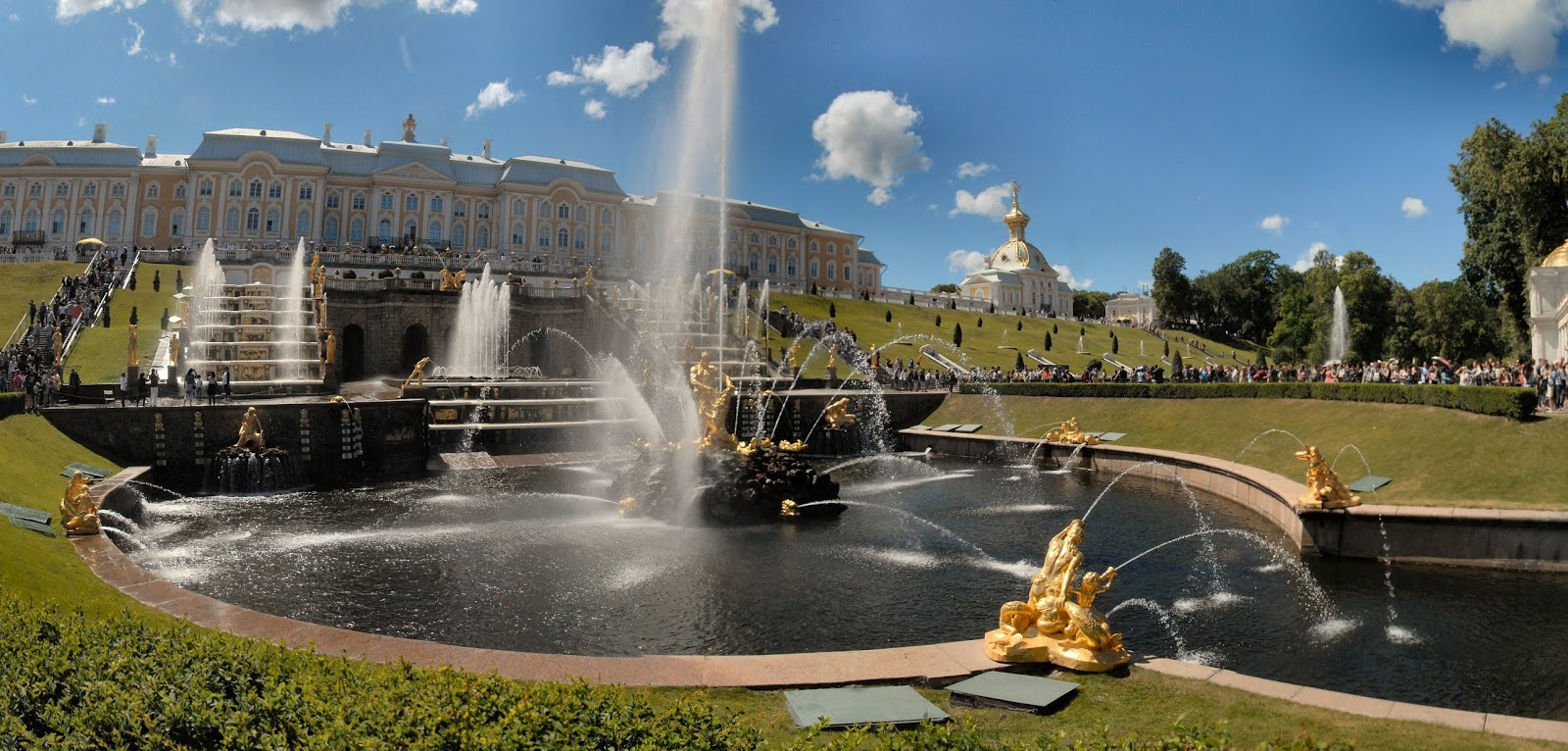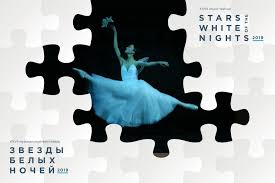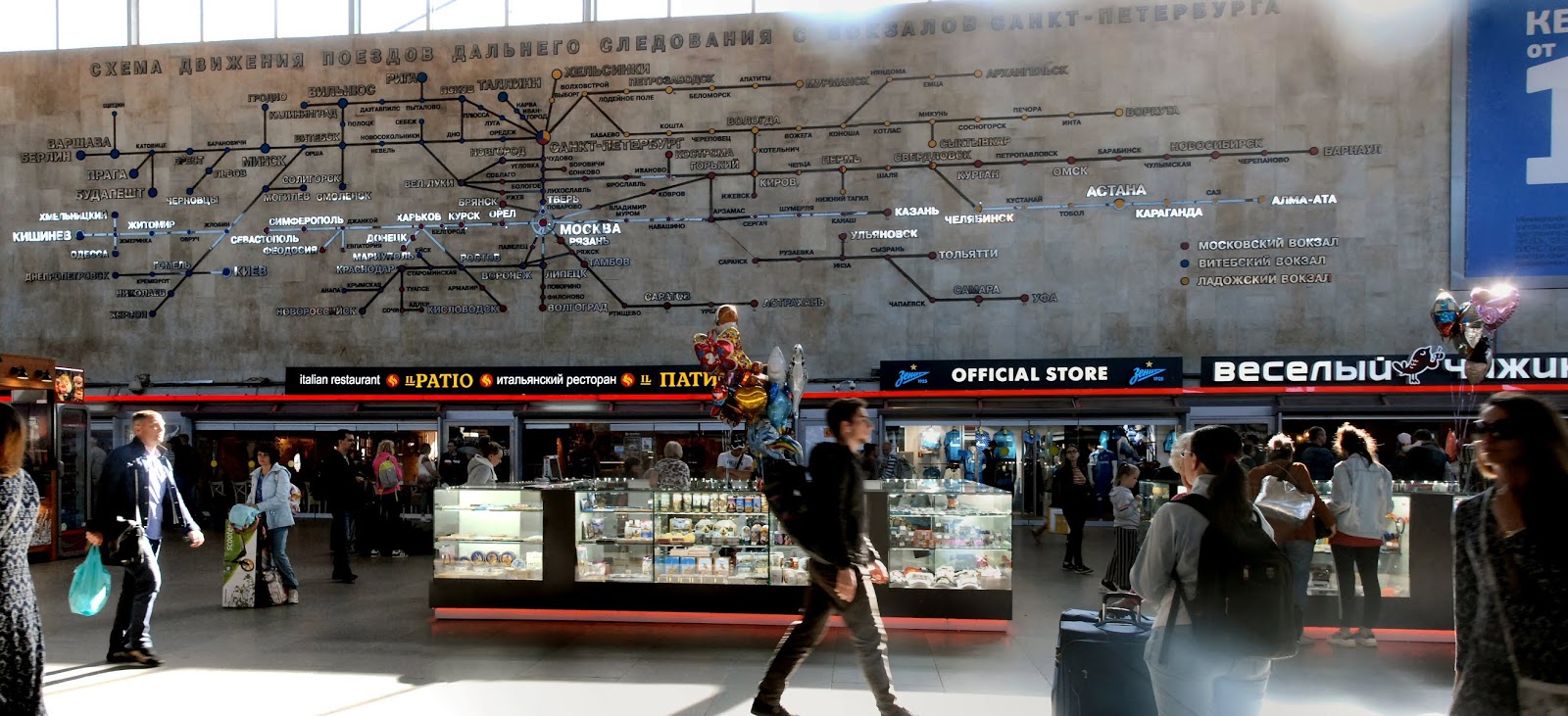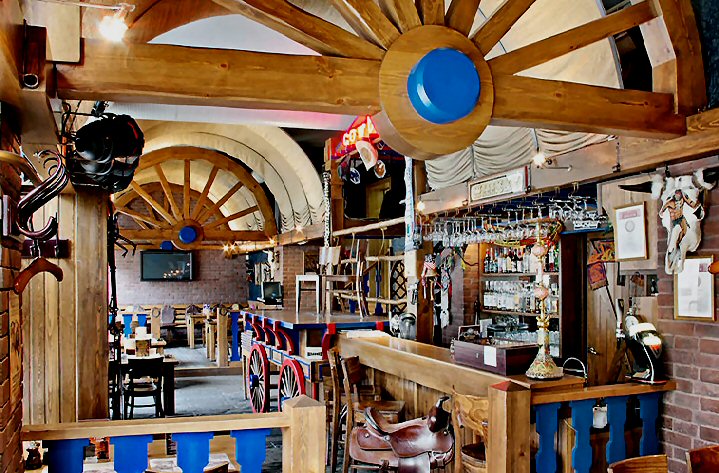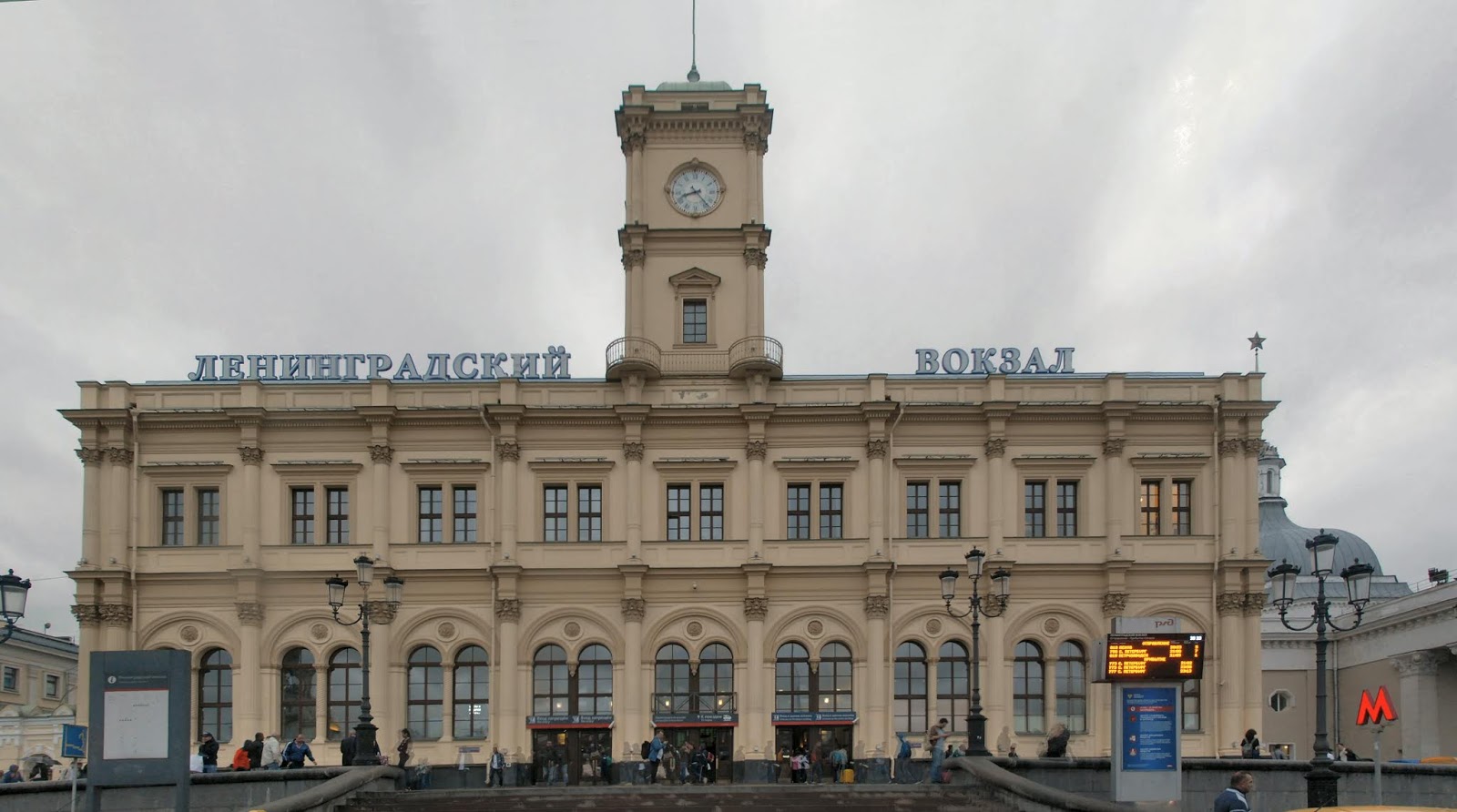Today we went to Peterhof Palace (Петерго́ф, Petergof) or, more correctly, to its lower gardens. Although the Palace itself is worth visiting, we felt we would be "palaced-out" with our two-day visit to the Winter Palace, aka the Hermitage, in the next couple of days. So we contented ourselves with the very spectacular gardens!
So how to get there? Well, we walked to Chernyshevskaya station, took the Metro to Admiralteyskaya, walked round by the Hermitage, and took a hydrofoil — known here as a Meteor, the Russian model hydrofoil used on the Neva River — for the dash to Peterhof.
Well, that's just about what happened, except that we ran into a bit of a commotion in and around the square in front of the Hermitage. It was the running of the XXX International Marathon White Nights. We hung around for a short while to take in the excitement, and then made our way to the riverbank and the Meteor terminal.
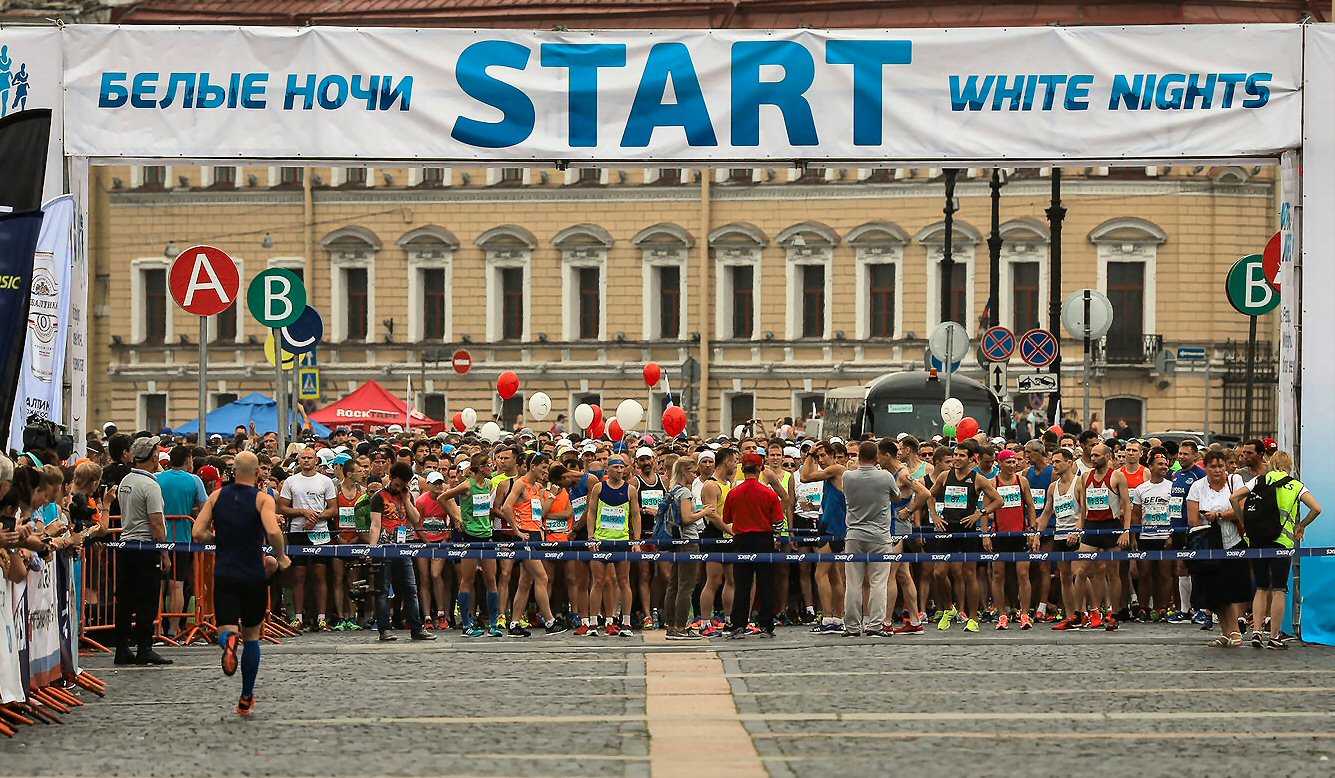
The trip to Peterhof is about 32km, and takes about 45 minutes on the Neva River and out into the Gulf of Finland. The trip is interesting for the first 10 minutes, while still in the Neva River, but the open gulf is basically just open water. The only excitement was when one Meteor passed or overtook another!
We got to Peterhof and wandered in to the gardens, stopping only for a refreshing caffeine hit on the way in. Walked in until we came to the Grand cascade and the Samson fountain. We've never seen anything like this. The sheer magnificence of the gilded statues and fountains below the palace has to be seen to be believed.
The Grand Cascade is modelled on one constructed for Louis XIV at his Château de Marly. There are 64 fountains whose waters flow into a semicircular pool in which the large Sampson fountain was installed in the 1730s. The current fountain is a replica installed in 1947 to replace the one looted by the invading Germans during the Seond World War. It depicts Samson tearing open the jaws of a lion, representing Russia's victory over Sweden in the Great Northern War — the lion features in Swedish coat of arms, and there was a major victory over the Swedes on St Sampson's Day!


The other part of the gardens, although perhaps not a spectacular, are delightful. We wandered the leafy avenues, and as we reached the shoreline of the Gulf of Finland, we came across the Hermitage Pavilion, designed for the relaxation of the Emperor and his guests in 1725, it has a moat an upstairs room replete with paintings. We didn't go in — it wasn't open to the public that day — but we just marvelled at the exterior of this exquisite gem!

Tonight we had tickets to the Mariinsky Theatre, for a performance of the Ballet 'Giselle'. We had originally had tickets to 'Shurale' on the 29th, but unfortunately the performance was cancelled. But the wonderful people at the Mariinsky offered us tickets for tonight's performance — better seats, with a 58% discount! Well, that's what we thought. It turns our that we had tickets in the second row of the second balcony. Sounds good! But the design of the Mariinsky means that the chairs in the second row are not raised sufficiently for people in that row to see over those in the front row. This means that much of the stage is obscured by the heads of those in the front. And if those people in the front have no idea of theatre protocol/etiquette, and lean forwards and/or decide to cuddle, the vision of those behind is obscured even more. This was our situation. We made our displeasure known during the interval and they did behave a lot better, but a tip for anyone going to the Old Mariinsky — don't accept anything but the front row in any of the balconies!
In spite of the difficuties imposed by the seating, the performance was delightful. 'Giselle' is one of the most technically demanding of ballets, and the Mariinsky company was certainly up to the task.
Another trap at the end of the night. The Mariinsky has a contract with the taxi companies, and provide taxis to take the patrons home after the performance — but the fact that our taxi TO the ballet cost 300 roubles (about $6.80), and our taxi home cost 1500 (about $34) may cause you to think. Get a taxi a little further from the theatre!
From our point of view, this is all part of the journey, and it was a bit of a luxury not to have to worry about the trip back home after the performance!


